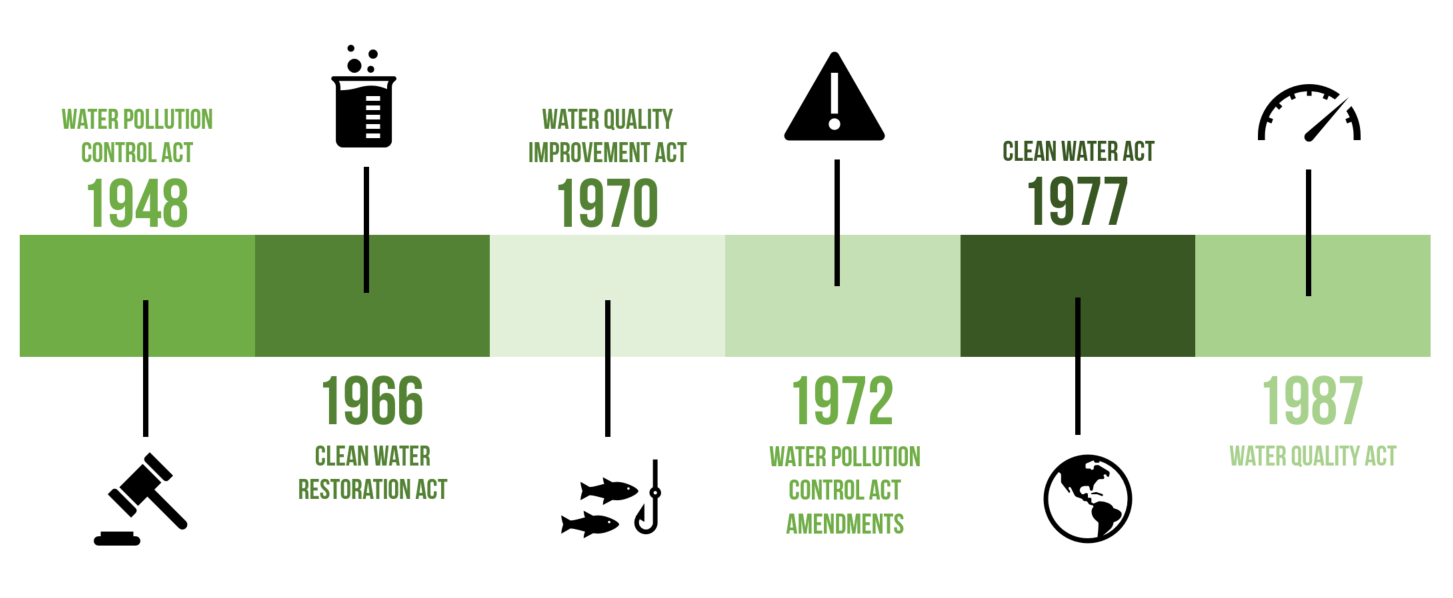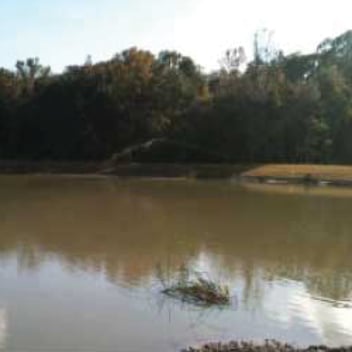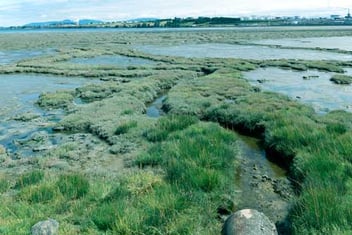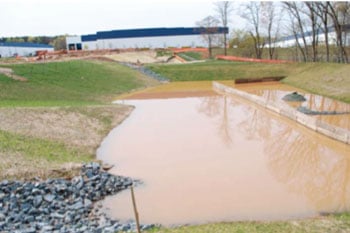INTERN VIEW: History of Water Regulations
Interestingly enough, water regulations are a relatively recent development in human history. Not until the discovery of germ theory and how diseases spread did humans care much about what they dumped into waterways. Since science has shown us the effects of polluted water on human health and the environment, governments have created regulations on waterways to protect us and our surroundings.
This week, I took a look into the historical development of today's water policy in the United States.
Water policy varies by region; see these links for more specifics:
I'll be going over a brief history of US Federal water standards, but the law may be more strict depending on the state where you are conducting your project. Each state's Department of Environmental Quality may create its own regulations on top of those set by the EPA.

1. Water Pollution Control Act (WPCA) of 1948
This is the first legislation that deals directly with water pollution on a case-by-case basis. It allowed government entities to set up programs to eliminate or reduce the pollution of interstate waters and improve the sanitary condition of surface and ground waters. It also allowed the Federal Works Administrator to assist agencies in building water treatment plants.
2. Clean Water Restoration Act of 1966
These amendments to the WPCA authorized the Secretaries of Interior and Agriculture and the Water Resources Council to conduct a study on the effects of pollution (including sedimentation). It also included procedures for reducing the type of pollution that affects human health or welfare.
3. Water Quality Improvement Act of 1970
The Environmental Protection Agency (EPA) was created in 1970 to take control of the functions previously held by the Department of Interior. These 1970 amendments required projects to control acid or other mine water pollution, and to control water pollution within the watersheds of the Great Lakes. The act expanded Federal authority over pollution control, established a State certification procedure to prevent the degradation of water below certain standards, and placed additional limits on oil discharge.
4. Water Pollution Control Act Amendments of 1972
These amendments gave broad national objectives to restore and maintain the chemical, physical, and biological integrity of US waterways. They greatly expanded the regulations on pollutant discharge, including limitations on point source pollution, evaluation on nonpoint source pollution, water quality inventory requirements, and toxic and pretreatment effluent standards. The amendments established the National Pollutant Discharge Elimination System that is still used today.
5. Clean Water Act of 1977
The Clean Water Act developed the Best Management Practices Program and gave the Fish and Wildlife Service authority to provide technical assistance to states developing best management practices for their water pollution control programs. It also outlined the procedures for states to create their own regulatory programs under the advisory of the Fish and Wildlife Service.
6. Water Quality Act of 1987
This latest act increased the requirements for water quality, as well as increased the penalties for violating those requirements. It required closer monitoring of pollutant levels, and stipulated requirements for cleanup in waters using the Best Available Technology (BAT).
Each state may have their own additional regulations on top of these, but these acts provide the minimum requirements for preventing water pollution.
To read about our Chitosan water treatment products, click below:




